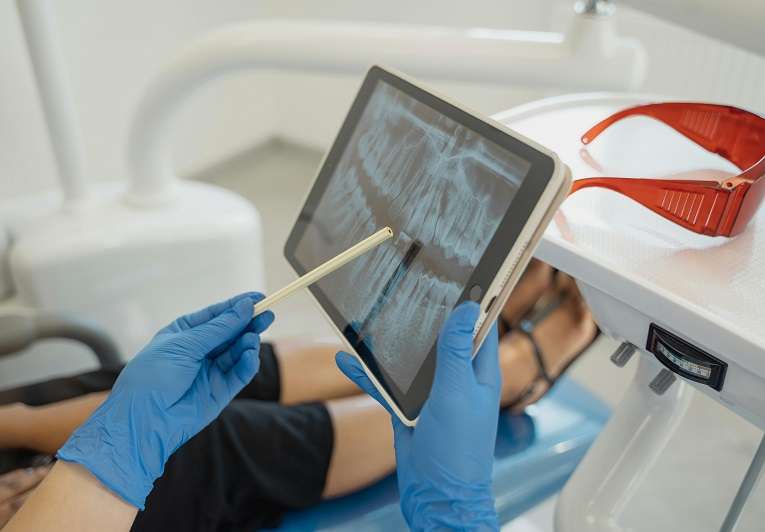When you hear the words “root canal,” it can stir up images that scream pain and fear. Well, it’s actually quite the opposite: a root canal on a cracked tooth could be the best possible scenario for keeping your tooth safe and comfortable. Knowing what happens and what to expect can really make this a much less intimidating experience for you if you are about to go through with the procedure.
Why A Root Canal is Necessary in Case of Cracked Teeth
Cracked teeth are common and can result from many aspects, such as trauma to a tooth or biting something very hard. The crack may be small, but it can lead to serious issues, such as exposure or even pulp infection. The pulp is the soft tissue inside a tooth that contains nerve endings and blood vessels. This usually means the crack is either exposing the pulp or causing an infection. Pain and swelling will become extreme, and if left untreated, the infection could spread to the bone. A root canal is an operation aimed at removing infected tissue, cleaning the inner surface of a tooth, and preventing damage so the tooth may not be pulled.
What to Expect During the Procedure
A root canal is not such a complicated procedure, though it does sound intimidating. For dentists and endodontists, it is an everyday procedure; here is what happens during the procedure:
1. Preparation and Numbing
First, they ensure that you are comfortable. The dentist will administer a local anesthetic to numb the area surrounding the tooth. This ensures you feel no pain at all during the procedure. If you are highly anxious, your dentist can offer a mild sedative to help you relax.
2. Accessing the Pulp
The moment you start feeling numb, the dentist will make a small opening on top of the tooth, enabling them to reach the pulp. You might hear the sound of the drill in your dental cavity; however, you will feel nothing because of the anesthetic. The dentist will carefully take out the infected or damaged pulp in your tooth.
3. Cleaning and Shaping the Root Canals
In another set of procedures, the remaining pulp is removed, leaving a hole. Tiny instruments are used to clean and shape the inside walls of the tooth’s root canals. This ensures all infected tissue is removed, creating space that will soon be filled. Flushing sterile solutions through the area helps eliminate any remaining bacteria.
4. The Sealing the Tooth
Once the canals are cleaned, they fill them with a rubbery substance called gutta-percha. This substance is meant to seal the tooth so that no bacteria find their way back in again. The dentist will cover the access hole with either a temporary or permanent filling to protect the tooth.
5. Placing a Crown
A crown is normally advised for cracked teeth after a root canal. A cracked tooth may weaken during the process, and a crown will provide it with strength to restore it to its function and look. This is typically performed during a subsequent visit after the root canal procedure.
How Long Does a Root Canal Take?
It usually takes an hour or two, depending on the crack’s complexity and the number of roots involved. Most of the cracks can be done with a root canal within one visit. In the presence of a considerable crack, a follow-up session may be necessary.
Pain During and After the Procedure
Although the term “root canal” might make you think it’s painful, most people experience minimal to no discomfort during the procedure because of anesthetics. After the anesthesia wears off, you could probably feel some soreness or discomfort in the treated tooth, especially when chewing or applying pressure to it. This soreness usually lasts for a few days, and over-the-counter pain relievers like ibuprofen or acetaminophen can help ease the discomfort.
If you find that the pain remains or aggravates, you are expected to go see your dentist, as it could imply that you are suffering from infection or other complications.
Post-Procedure Care and Recovery
You will be advised not to chew on the tooth that was treated until it is fully restored with a crown or permanent filling. Soft food intake is recommended for at least the first few days, based on any specific dentist recommendations. If a temporary filling was placed by your dentist, a follow-up appointment will be scheduled to put in the permanent filling. At the same time, a crown may be placed on the tooth if it was broken or cracked. Taking proper care of the treated tooth after the procedure is important for its long-term health.
Advantages of a Root Canal End
In most cases, a root canal is an excellent long-term gain, especially in cracked teeth. It can help end pain, remove infection, and save the tooth from extraction. Proper care of a tooth after a root canal can make it last for many years, and sometimes even a lifetime.
Without the root canal, infections or damage may worsen. In some cases, it leads to tooth loss with treatments that are more complex in nature. Root canal preserves your natural tooth and makes sure that your smile does not get affected by complications later on.
Conclusion
It might sound intimidating to have a root canal on a cracked tooth, but it is an extremely effective procedure that can save your tooth and alleviate your pain. Modern techniques and anesthesia make the process relatively painless, and the benefits far outweigh the temporary discomfort of recovery. If you are told that you need a root canal, do not panic since this is one of the most common dental procedures that can ensure your tooth remains healthy and functional for years to come. If you’re searching for a “root canal doctor near me,” rest assured that there are many experienced professionals who can help.


